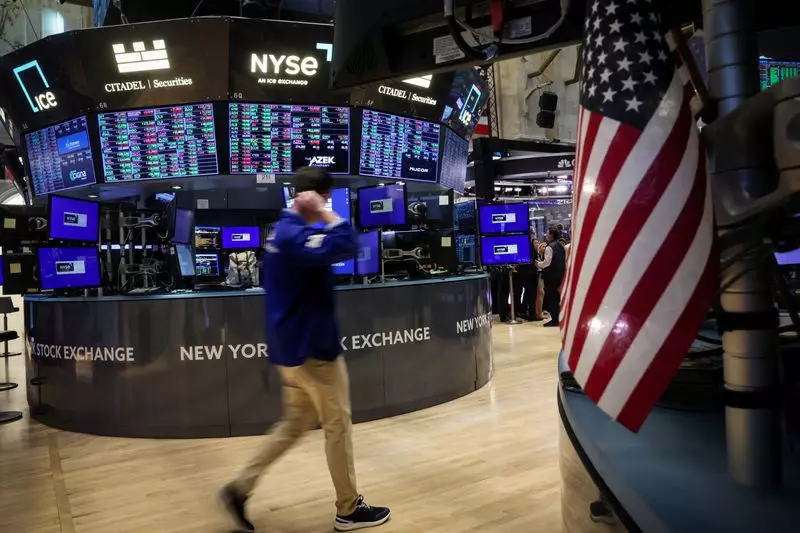The recent performance of U.S. stock markets, notably the Dow Jones Industrial Average, S&P 500, and Nasdaq Composite, showcases remarkable resilience as they achieved record closing highs. This surge in stock prices, particularly on a Friday that marked the end of another trading week, can be attributed to strong earnings reports from major tech companies, particularly Netflix, which saw an 11.1% increase in its stock value. This spike not only reflects positive sentiment surrounding Netflix’s robust subscriber growth but also points to a broader trend of optimism within the technology sector. The primary indices not only secured their highest closing figures but also continued their six-week streak of gains, the longest since late 2023, suggesting a sustained bullish outlook among investors.
The market’s uptick can be explicitly linked to several key factors. Netflix’s impressive earnings report underscored its capacity for growth, lifting the communication services sector by 0.9%, marking it as the strongest performer among the 11 sectors within the S&P 500. Similarly, widespread gains across technology stocks contributed to the market’s overall ascent. Apple shares rose by 1.2% following reports of significant new iPhone sales in China, while Nvidia also benefited from an upward revision in its price target by analysts at Bank of America, gaining 0.8%. This collective performance not only illustrates investor confidence in the tech sector but also highlights individual companies’ capabilities to exceed market expectations, driving prices ante.
The market has been characterized as a “what’s not to like” environment, reflecting the overall positive economic data that suggests a gradual return to disinflation. Notably, industry experts do point out the crucial role that robust earnings play in maintaining this upward trajectory. David Waddell, CEO of Waddell & Associates, remarked on the necessity of solid corporate earnings to mitigate any concerns related to valuation stretching and forthcoming political uncertainties.
However, all is not without concern in the financial spheres. The S&P 500 is trading at nearly 22 times forward earnings, indicating potentially stretched valuations that may render stocks vulnerable to a market correction. Political uncertainties surrounding the upcoming U.S. presidential election, scheduled for November 5, compound this potential for volatility. Many experts caution that while positive earnings can lend support to market growth, any failure to meet these heightened expectations could create ripples across the indices, leading to greater investor caution.
Additionally, while financial institutions have generally reported encouraging earnings results, certain setbacks have been observed. For instance, American Express’s quarterly revenue miss led to a 3.1% drop in its stock, reflecting how single reports can sway market confidence. Despite a broader positive trend in bank performance, the S&P Banks index completed its five-week winning streak with a slight decline, underscoring the sensitivity of the market to individual earnings reports.
Small-cap stocks have also attracted considerable attention and favor in recent trading discussions, with both the Russell 2000 and S&P Small Cap 600 indexes outperforming their larger counterparts throughout the week. Yet, these indexes faced slight declines on the last trading day, indicating a mixed picture for investor sentiment. Meanwhile, the energy sector faced significant hurdles, chiefly due to diminishing oil prices combined with a troubling earnings report from SLB, which, after posting results below expectations, triggered subsequent declines in related firms like Baker Hughes and Halliburton.
The energy index’s 2.6% downturn for the week starkly contrasts with the generally positive sentiment surrounding other sectors. The declines in energy stocks are further exacerbated by global supply concerns and geopolitical factors, particularly the ongoing conflict in the Middle East, which has raised alarms about future oil demand, especially from China.
Overall, while the stock market continues to display resilience and optimism, buoyed by impressive corporate earnings particularly in the tech sector, caution remains prudent. Investors need to monitor economic indicators and upcoming earnings closely, as these factors will significantly shape the market’s direction. Any signs of disappointment or volatility linked to external factors could challenge the bullish momentum of the current rally. In this dynamic environment, adaptability and a keen eye on earnings prospects will be essential for navigating potential shifts in market sentiment.

